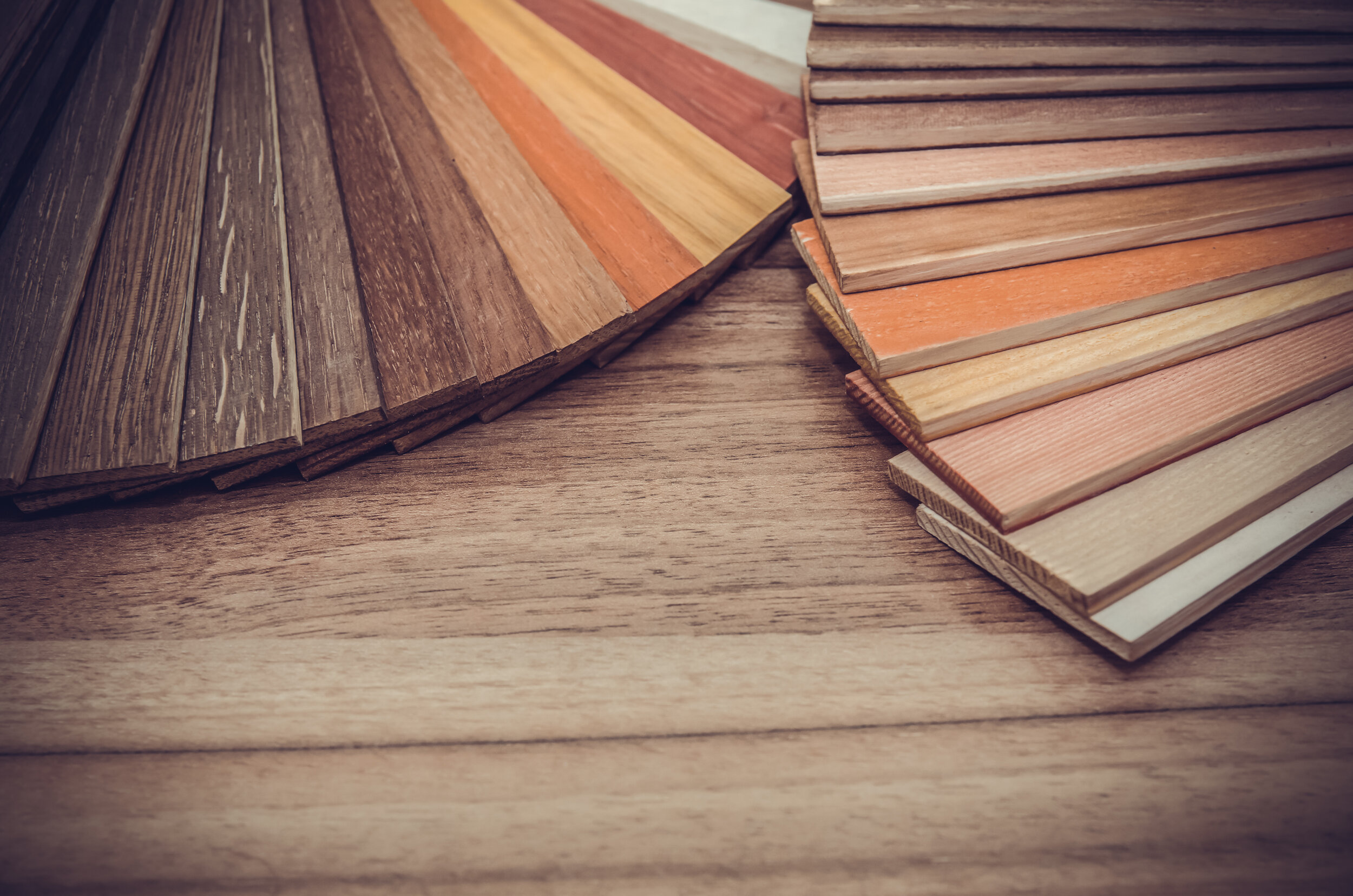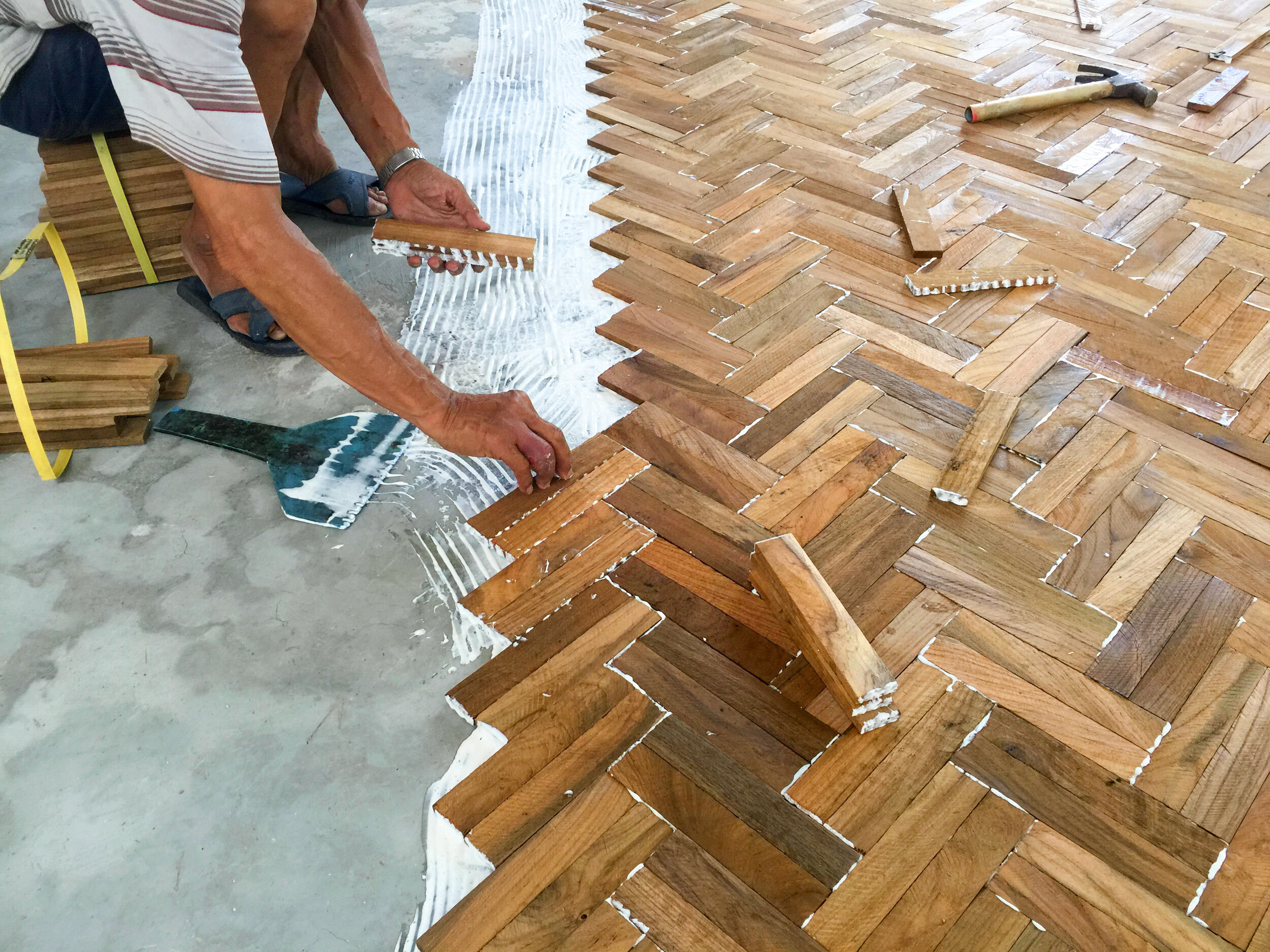A Complete Guide to Parquet Flooring
/Parquet Flooring
Disclaimer: As an Amazon Associate I earn from qualifying purchases. There are affiliate links in this post. This means that at no cost to you, I will receive a commission if you purchase through my link. I will only ever promote the products and services that I trust and 100% recommend. You may read my full disclosure policy for more information. Thank you for supporting my business in this way.
Even if you don’t recognize the name, you’ve likely seen parquet flooring at some point in your life. Made from hardwood pieces that are shaped and installed to create geometric patterns, the type of flooring has deep historical roots. According to some design professionals, it is poised to make a comeback with the rise of mid-century modern decor.
Read on to learn everything you need to know about this flooring style.
See also: A Complete Guide to Wood Veneer
History of Parquet Flooring
If you have a parquet floor in your apartment, it was likely installed in the 1960s. But the style dates back much further. True parquet floors were first developed in the 17th century in France and were used in castles, public buildings, mansions, and palaces. The name itself comes from the French word “parquetry”, translated to mean “a small compartment”.
In the 18th century, parquetry flooring became very popular in houses of aristocrats in St. Petersburg and cities in Latvia. Due to the extensive process of hand-piecing together the floor, it was a sign of wealth and power. Some well-known buildings that still boast parquet floors today include The Palace of Versailles in France, The Chinese Palace in St Petersburg, and The Walnut Study in the Menshikov Palace in St Petersburg.
The style faded from the mainstream public for years, then returned in a redefined way in the 1960s when parquet tiles became all the rage. Made with thin hardwood veneers, the tiles were an affordable replication of an expensive flooring style.
Benefits to Parquet Flooring
One major benefit is the unique, historical style of this handcrafted wood flooring. It has the homey appeal of a wood floor with a twist. It looks great in mid-century modern homes, and adds dimension to your room in a distinctive way.
The flooring is also very easy to install — another huge advantage for homeowners. Parquet flooring usually comes in thin tiles that are simple to cut and glue down. The finishing process is typically minimal or nonexistent. You don’t have to deal with nails or a quick glue-drying window.
Parquet flooring is also a great choice for homeowners on a budget. It’s easy to find discounted tile options, and with a bit of research, it’s entirely possible to save installation costs by laying the tiles yourself.
Drawbacks to Parquet Flooring
However, there are a few disadvantages to keep in mind when installing parquet flooring. First, the flooring type is susceptible to water and fire damage. This is because wood expands when it becomes wet, destroying the hand-glued patterns that make the wood pieces stick together. Repairing the floor can be an extensive and costly process, particularly if it is a historic house. It can also be time-consuming to find the point of failure.
Another peril for old, historic parquet floors is damage from sunlight. Excessive exposure to the sun can cause the color of the floor to fade, and over a long enough period of time, it can damage the wood itself. If you do choose to install parquet floors, make sure it is in a room where you can keep the floor shielded from direct sunlight. You should also stay away from installing in humid places such as bathrooms, washrooms, or the basement.
Although parquet floor installation is much simpler than other types of flooring, there are still two aspects that can be difficult. First, the layout must be precise, otherwise the parquet pattern will be miss-matched. Second, you must have a level subfloor, otherwise the parquet tiles will start to bend over time under the weight of foot traffic.
Where to Find Parquet Flooring
It’s no secret that it is more difficult to find hardwood parquet flooring today than it was during the style’s heyday in the ‘60s. Many brands have discontinued their parquet tile offerings. However, it’s often possible to find the materials at a discount both online and at retail locations. Check with your local flooring contractor or flooring store — in most cases, they will be able to point you in the right direction.
When you do find the tiles that you want, make sure to purchase more than you need in case a piece is damaged during or after installation. Because of the scarcity of parquet material, you may not be able to find an exact match to your needs later on.
Tips for Installation and Maintenance
Avoid installing parquet flooring in bathrooms, laundry rooms, basements, or any location that may be susceptible to water leaks or humid conditions. You should also order the tiles at least two weeks in advance of installation to give them time to adjust to the conditions of your home.
When you’re ready to install, you can lay the tiles in one of two ways: either in rows or from the center of the room outward. If you are installing the tiles yourself, it’s typically best to go with the row method, as it will be easier to line up the patterns on the tiles. You should have a jigsaw on hand to cut the tiles down to size around the walls and doors.
Once your parquet tiles are installed, clean the floor using a floor cleaner and a lint-free cloth. Parquet flooring does not require much in the way of long-term maintenance, but you should still keep dust and dirt off the floor by sweeping it regularly or using a dry microfiber mop.
About once a month, you can go over the tiles with a wood floor product. Keep water and waxes away from the wood. The former can cause damage to the wood, and the latter can ruin the finish and make the floor dangerously slippery.
Should I Go With a Parquet Floor?
If you’re considering installing a parquet floor in your home, it’s important to think about the overall style aesthetic of your home. In a modern home, this style may seem out of place. Stylistically, parquet floor tiles can seem dated, and they may not add to the resale value of your home — an important consideration during any renovations. But in a renovated, historical home, or paired with a mid-century aesthetic, parquet flooring may be the perfect choice.
Brandon Hubbard, AIA, NCARB, LEED AP BD+C









